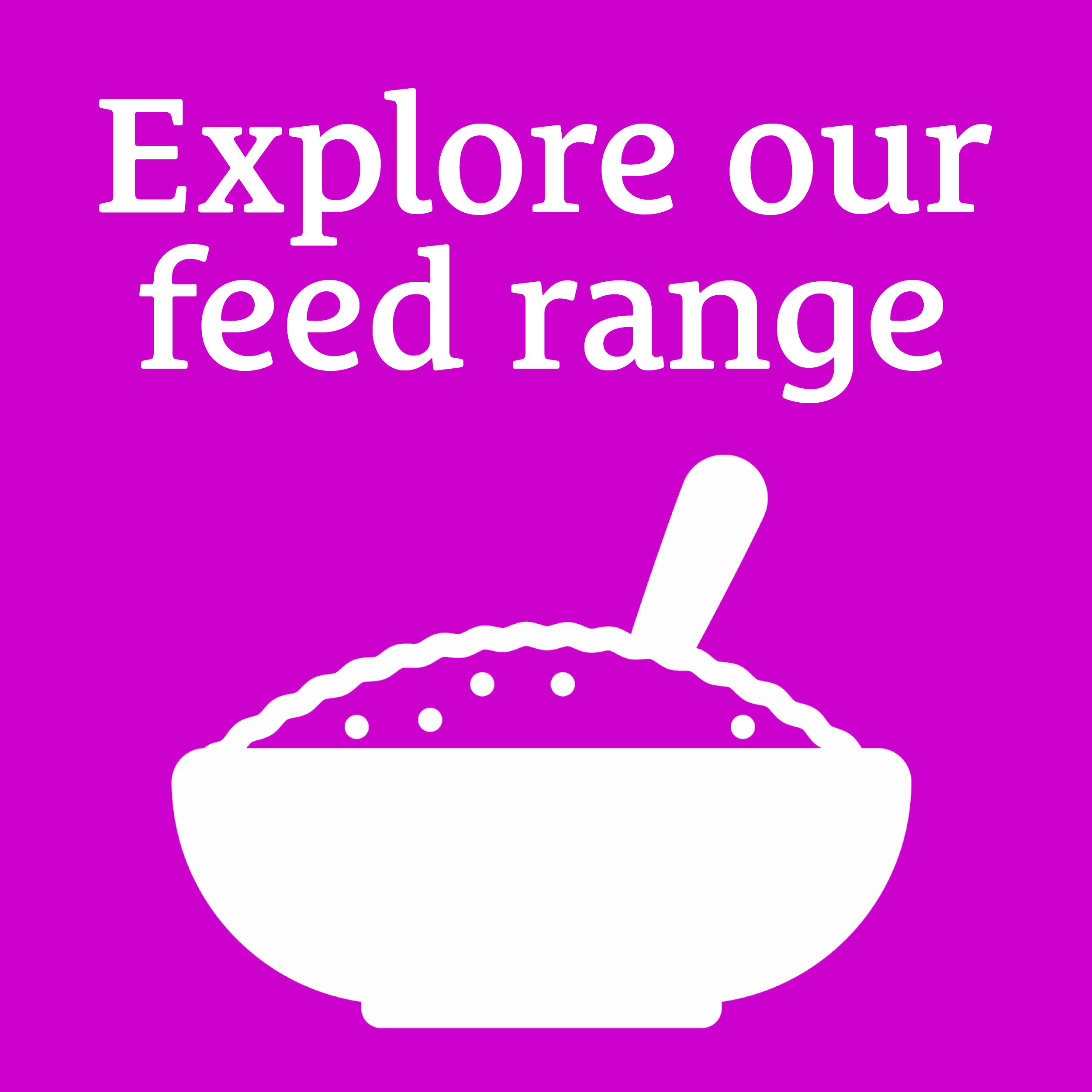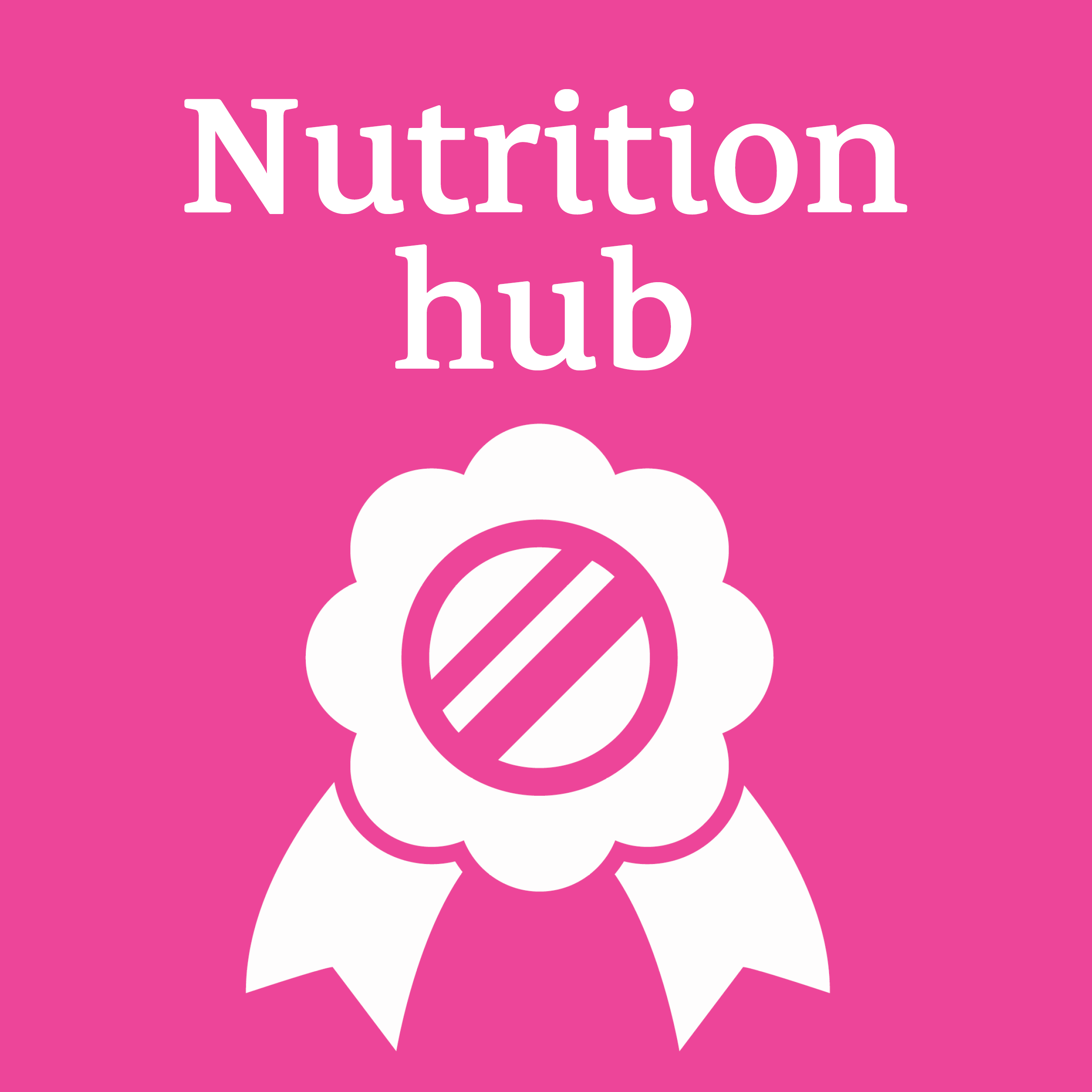Advent Calendar
Answers
False
1st December
Which is longer, the small intestine or the large intestine?
- Small intestine ✔️
- Large intestine
The horse’s small intestine is long and narrow, approximately 22m long and 6-7cm in diameter. The large intestine is approximately 6-7m long but is significantly ‘wider’ with some sections measuring over 30cm in diameter!
2nd December
Which is higher in calories, a Stubbs scoop of low-calorie cubes or a Stubbs scoop of high calorie chaff?
- Low calorie cubes ✔️
- High calorie chaff
Due to the difference in density or ‘weight per scoop’, a scoop of low-calorie cubes provides around 3-4 times more calories than the same sized scoop of high calorie chaff! Feeding by volume or ‘by the scoop’ rather than by weight can lead to under or oversupplying energy (calories), as well as vitamins and minerals.
3rd December
Horses and ponies prone to laminitis need to be managed on a diet low in:
- Sugar and protein
- Sugar and starch ✔️
- Starch and protein
A diet low in non-structural carbohydrate (NSC) or ‘starch and sugar’ is key to managing horses and ponies at risk of laminitis. For more tips on feeding and managing horses and ponies prone to laminitis visit the nutrition library on our website and for specific advice, contact the Care-Line.
4th December
True or false – energy and calories are the same thing?
- True ✔️
- False
Energy and calories are two different terms used to describe the same thing. This means it’s impossible to find a feed that is high in energy and low calories or vice versa! Calories are simply a measurement of energy. In human food, energy is often measured in ‘kilocalories’. In the UK, energy in equine feeds is expressed in ‘megajoules of digestible energy (MJ DE)’. However, ‘calories’ is often used when talking about a horse’s condition as it’s a term commonly associated with bodyweight.
5th December
The typical recommended feeding rate for a mix or cubes for a 500kg horse in light work is
- 2kg per day
- 3kg per day ✔️
- 4kg per day
Most cubes and mixes are designed to be fed at around 3kg per day for a 500kg horse in light work. If your horse maintains weight easily on less than the recommended amount of compound feed, feeding a balancer alongside or instead of a mix or cube will help to ensure they receive the vitamins and minerals needed for a balanced diet, without excess calories. On the other hand, poor doers may sometimes need an increase in feed. The feeding rates on pack are intended as a guide, for specific advice, contact one our friendly nutrition advisors on 01908 226626 or fill in our online consultation form.
6th December
Horses produce saliva
- Continuously
- In anticipation of chewing
- Only when they chew ✔️
Saliva provides a natural buffer to stomach acid but unlike people, horse’s only produce saliva when they chew. This is why long periods without eating increases the risk of gastric ulcers. In one study, the risk of gastric ulcers was found to be approximately 4 times higher in horses left for more than 6 hours without forage (although the risk may be higher during the day). For more tips on managing horses and ponies prone to gastric ulcers visit the nutrition library on our website, and for specific advice, contact the Care-Line.
7th December
What is the most common cause of feed related excitability
- Cereal starch ✔️
- Sugar
- Over-suppling energy (over-feeding)
While diet is just of many factors can affect behaviour, cereal starch is the most cause of feed related excitability. If your horse is prone to excitability, avoid mixes (whole cereal grains are high in starch) and look for fibre-based feeds that are low in starch and sugar. For more advice visit the nutrition library on our website.
8th December
Horses and ponies are considered obese if they have a body condition score of
- 6 or above on the 1-9 scale
- 7 or above on the 1-9 scale ✔️
- 8 or above on the 1-9 scale
Body condition scoring is a practical method of assessing body fat by eye and by touch. On the 1-9 scale, a score of 5 is generally considered ideal and a score of 7 or above is considered obese. For more advice check out the body condition scoring tool on our website.
9th December
Balancers are ideal for:
- Horses and ponies that maintain weight easily on forage alone ✔️
- Promoting weight gain
- All horses and ponies regardless of their body condition or current diet
Balancers are small, nutrient dense feeds (normally pellets), designed to provide a concentrated supply of vitamins, minerals and amino acids. Due to the low feeding rate, they contribute minimal calories, starch and sugar to the diet, making them ideal for good doers, including those prone to excitability and laminitis. Many balancers also include added functional ingredients such as pro and prebiotics for digestive support or glucosamine and MSM to support joint health. Check out the SPILLERS range of balancers here.
10th December
Which of the following statements is correct?
- Haylage is likely to be higher in calories and sugar than hay
- Hay is likely to be higher in calories and sugar than haylage
- The calorie and sugar content of both hay and haylage is variable ✔️
Haylage is not automatically higher in calories, sugar or any other nutrient than hay. Many factors affect the nutrient content including grass species, management of the grass and environmental conditions during the growing season, harvest conditions and the maturity of the grass at the time of harvest. These factors, particularly maturity of the grass at the time of harvest, have greater effect on the nutrient content than whether it is hay or haylage.
11th December
True or false: all feeds containing molasses are high in sugar
- True
- False ✔️
Feeds containing molasses are not automatically high in sugar. Molasses is typically added to feeds at a rate of 5-10%, contributing around 2.5-5% sugar to the finished feed. It’s also important to remember that molasses free does not mean sugar – grass nuts for example are molasses free but could easily contain more than 10% sugar, while a short chopped fibre feed containing molasses may contain <5% sugar. Don’t forget, if your horse needs a low sugar diet, they are likely to need a low sugar diet too! For more information on starch and sugar visit the nutrition library on our website.
12th December
Which provides the least amount of calories?
- A Stubbs scoop of soaked sugar beet ✔️
- A Stubbs scoop of low-calorie cubes
- A Stubbs scoop of high-calorie cubes
On a kilo for kilo basis, sugar beet provides a similar level of calories to a conditioning feed, but the increase in volume after soaking makes it easy to overestimate how much you are feeding. Soaked sugar beet contains around 85% water which means a scoop of ‘Horse and Pony Cubes’ may provide 4-5 times more calories than a scoop of soaked sugar beet! Always remember to weigh sugar beet and mashes feeds before soaking!
13th December
What is the largest source of sugar in a horse/ pony’s diet?
- Forage ✔️
- Bucket feeds containing molasses
- Molasses free bucket feeds
Forage is the largest source of sugar in a horse’s diet. Did you know a 250kg pony living out 24/7 may consume almost 2kg of simple sugars from grass alone! In comparison, the recommended amount of balancer (for the same size pony) containing 5% sugar will provide just 12.5g of sugar – approximately 3 teaspoons! However, hay and haylage can be deceptively high in sugar too. A molassed mix will provide around 300-360g sugar if fed at 3kg per day but 10kg of hay (dry matter) may provide up to 1.5kg of simple sugars! Don’t forget, if your horse needs a low sugar diet, they are likely to need a low sugar diet too! For more information on starch and sugar visit the nutrition library on our website.
14th December
Which type of horse needs more energy (calories)?
- A racehorse
- A mare in early lactation ✔️
A mare produces around 3% of her bodyweight in milk per day in early lactation, (approximately 15 litres for a 500kg mare!), requiring more energy (and protein) than a racehorse. However, individual requirements vary and not all mares will need a significant increase in ‘bucket feed’. Stud balancers are the ideal option for mares (as well as foals, yearlings and stallions) that do not require the high level of calories provided by traditional stud feeds. If you’d like advice on feeding a mare, foal or yearling, reach out to our team of friendly nutrition advisors via 01908 226626 or fill in our online consultation form.
15th December
On as ‘as fed’ basis (the amount weighed out) should you feed:
- More haylage than hay ✔️
- Less haylage than haylage
- The same amount regardless of if whether it’s hay or haylage
All forage contains some water, and the water doesn’t count towards the horse/ pony’s forage intake. As haylage contains more water than hay, you need to feed approximately 20-50% more of it on an ‘as fed’ basis. In simple terms, ‘as fed’ describes the amount of hay/ haylage weighed out, while ‘dry matter’ refers to the amount weighed out minus the water. The difference in feeding rates sometimes causes confusion so for specific advice, reach out to our team of friendly nutrition advisors via 01908 226626 or fill in our online consultation form.
16th December
True or false: some vitamins and minerals can be harmful if over-supplied
- True ✔️
- False
Some vitamins and minerals can be harmful if over-supplied which means it really is possible to have too much of a good thing. Contact a nutrition advisor before adding supplements containing vitamins and/ or minerals on top of your current feed, especially those containing selenium, iodine, iron or vitamin A.
17th December
Most pelleted feed balancers are designed to be fed at rate of
- 100g per day for a 500kg horse
- 500g per day for a 500kg horse ✔️
- 1kg per day for a 500kg horse
Most pelleted feed balancers are designed to be fed at rate of 100g per 100kg of bodyweight per day which is equivalent to 500g per day for a 500kg horse. If you are feeding a balancer alongside another feed containing vitamins and minerals you should reduce the amount accordingly. For example, feeding half the recommended amount of balancer alongside half the recommended amount of compound feed generally works well - provided the additional calories provided by the compound feed are needed! If your horse/ pony is overweight, why not join the SPILLERS Slimmers’ Club?
18th December
Which of the following is not a primary source of energy (calories) horses?
- Fibre
- Oil
- Protein ✔️
- Sugar
- Starch
The complex process of metabolism converts certain nutrients in feed and forage to energy. The main sources of energy in a horse’s diet are fibre, oil, starch and sugar. Protein is not a primary energy source for horses and contrary to popular belief, will not cause or exacerbate excitability.
19th December
Which of the following statements is correct?
- Getting too hot can contribute to weight loss
- Getting too cold can contribute to weight loss
- Getting too hot and too cold can contribute to weight loss ✔️
Getting too cold can lead to weight loss so ensuring poor doers are appropriately rugged in cold weather helps to prevent them wasting valuable energy (calories) keeping warm. However, did you know that getting too hot can affect appetite and may contribute to weight loss too? Senior horses and ponies may have difficulty regulating their bodyweight and may need their rugs changed more frequently.
20th December
Ponies turned out 24/7 may easily consume
- Double the published energy (calorie) requirement for light work
- Three times the published energy (calorie) requirement for light work ✔️
- 5 times the published energy (calorie) requirement for light work
Ponies turned out 24/7 may consume up to 5% of their bodyweight in grass per day (on a dry matter basis) which means grass alone may easily provide three times the published energy (calorie) requirement for light work at certain times of year. In fact, a 250kg pony turned out 24/7 may consume enough energy (calories) to fuel a 500kg racehorse – equivalent to over half a bag of conditioning cubes every day!
21th December
Which type of feed should be given prior to exercise in horses prone to gastric ulcers
- Shorted chopped fibre (chaff) ✔️
- Cubes
- Mix
Feeding short chopped fibre prior to exercise helps to prevent ‘gastric splashing’ by forming a protective ‘fibre mat’ on top of the contents of the stomach. Current advice is to feed 2 litres of short chopped fibre (by volume - equivalent to 1 Stubbs scoop) in the 30 minutes before exercise. For more advice on feeding horses prone to gastric ulcers download this free guide. https://www.spillers-feeds.com/sites/g/files/fnmzdf1656/files/2024-02/Equine%20Gastric%20Ulcers%20-%20Information%20Sheet.pdf
22nd December
If your horse/ pony is overweight, you should aim to reduce the number of droppings they do by approximately
- 10%
- One-third ✔️
- 75%
If you don’t how much your horse weighs or they have access to grazing, counting droppings may be practical method of monitoring their forage intake. If your horse/ pony is overweight, aim to reduce the number of droppings by a third initially and never by more half. If your horse/ pony is overweight weight, why not join the SPILLERS Slimmers’ Club?
23rd December
Which of the following statements is correct
- You should weigh out the same amount of hay regardless of whether you intend to feed it dry or soak it before feeding
- You should weigh out more hay if you intend to soak it before feeding ✔️
- You should weigh out less hay if you intend to soak it before feeding
Due to the loss of nutrients into the water, your haynet will contain less dry matter or ‘actual hay’ post soaking. Increasing the amount of hay you soak helps to ensure you don’t inadvertently restrict your horse/ pony’s forage intake too severely
24th December
True or false: ‘Lite balancers’ are significantly lower in calories than ‘regular’ balancers.
- True
- False ✔️



